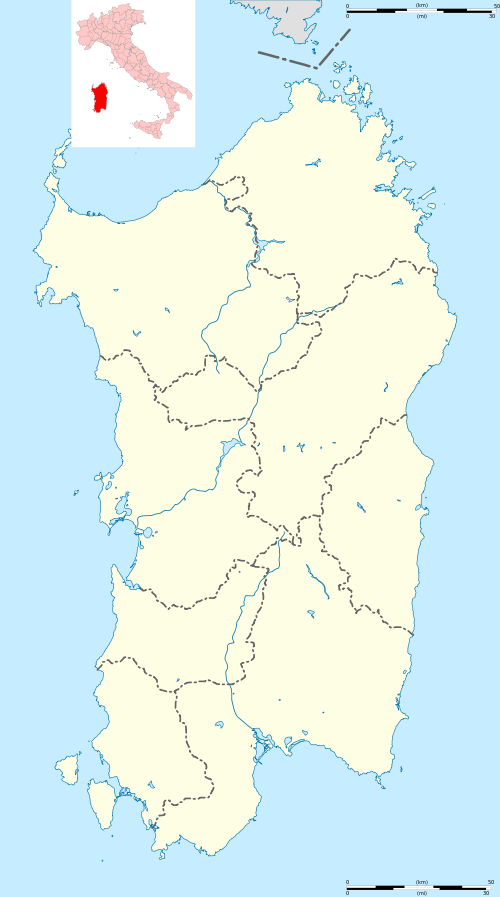Gonnesa
| Gonnesa | ||
|---|---|---|
| Comune | ||
| Comune di Gonnesa | ||
 | ||
| ||
 Gonnesa Location of Gonnesa in Sardinia | ||
| Coordinates: 39°16′N 8°28′E / 39.267°N 8.467°E | ||
| Country | Italy | |
| Region | Sardinia | |
| Province / Metropolitan city | South Sardinia | |
| Frazioni | Normann, Nuraxi Figus | |
| Government | ||
| • Mayor | Hansel Cabiddu | |
| Area | ||
| • Total | 47.5 km2 (18.3 sq mi) | |
| Elevation | 40 m (130 ft) | |
| Population (30 November 2008[1]) | ||
| • Total | 5,149 | |
| • Density | 110/km2 (280/sq mi) | |
| Demonym(s) | Gonnesini | |
| Time zone | CET (UTC+1) | |
| • Summer (DST) | CEST (UTC+2) | |
| Postal code | 09010 | |
| Dialing code | 0781 | |
| Patron saint | St. Andrew | |
| Saint day | 30 November | |
| Website | Official website | |
Gonnesa is a comune (municipality) in the Province of South Sardinia in the Italian region Sardinia, located about 60 kilometres (37 mi) west of Cagliari and about 14 kilometres (9 mi) northwest of Carbonia, in the Iglesiente subregion.
The town was refounded in the late 18th century by the local feudatory. During the 19th century it's territory was affected by the resumption of mining which contributed significantly to its population growth .
In the Municipality of Gonnesa is located the mine of Nuraxi Figus, the last active coal mine in Italy today.
In its territory there is an important archaeological site, the nuraghe Seruci, and beach of almost 4 kilometres (2 mi) along which it is possible to surf, especially in a spot called Funtanamare. The other two spots are called Plag' 'e Mesu ("Middle Beach" in Sardinian language, and Porto Paglia. Gonnesa borders the following municipalities: Carbonia, Iglesias, Portoscuso.
References
External links
| Wikimedia Commons has media related to Gonnesa. |
